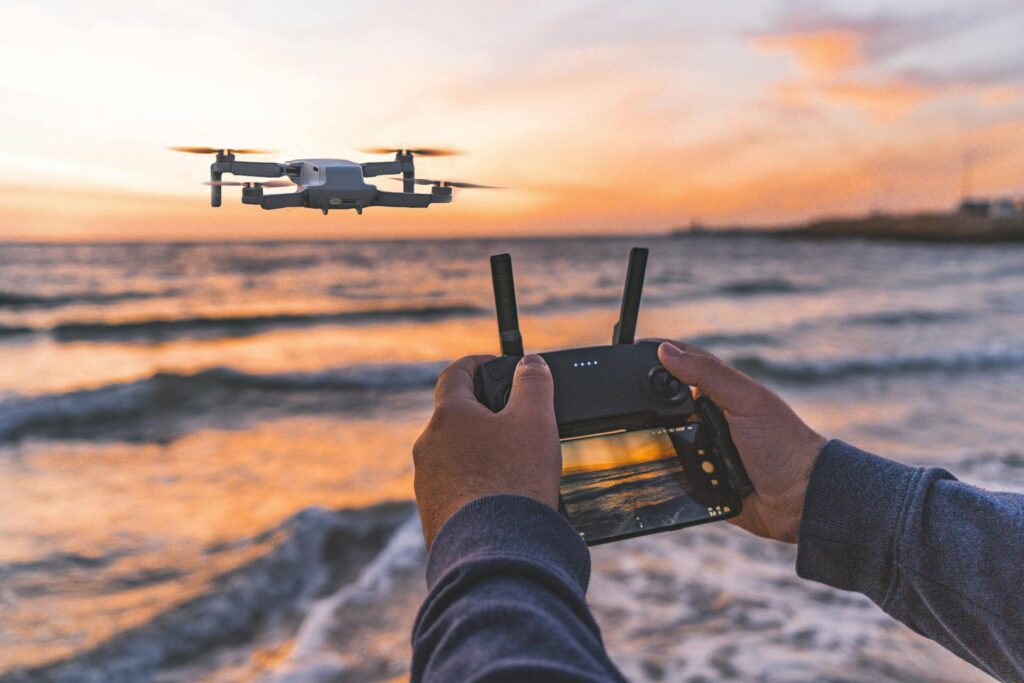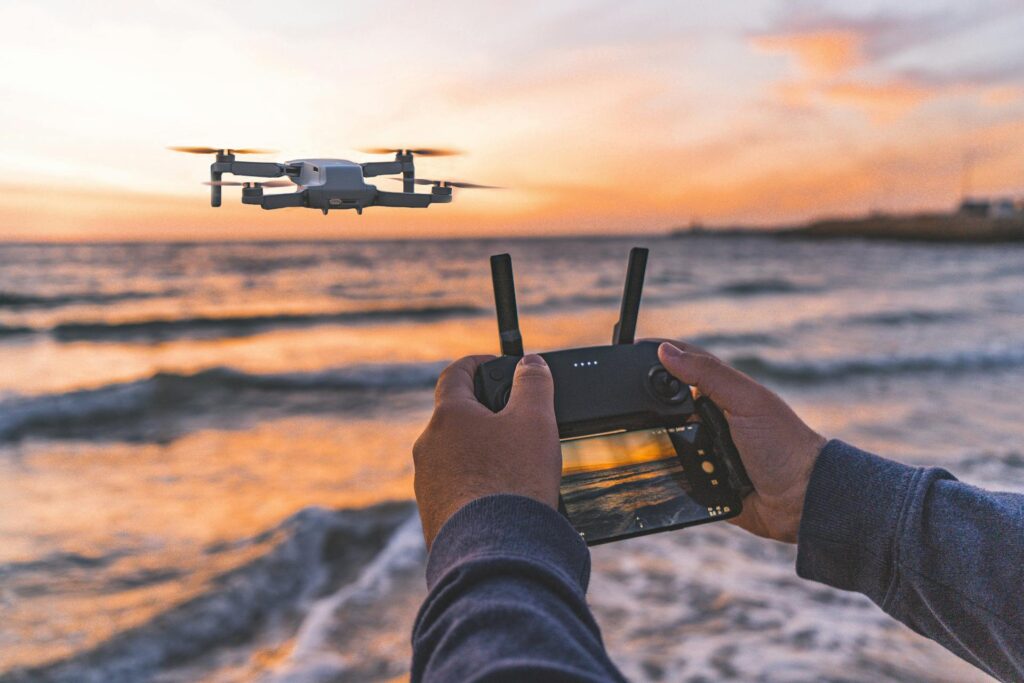Introduction
Overview of Gesture-Controlled Drones

Gesture-controlled drones represent a significant leap in unmanned aerial vehicle (UAV) technology, allowing users to command drones with simple hand movements. This intuitive control mechanism opens up new possibilities for users across various industries, making drone operations more accessible and versatile.
Historical Development and Evolution
The concept of gesture control has evolved from early experiments in motion detection to sophisticated systems capable of recognizing complex hand gestures. Initially, drones were primarily controlled via joysticks and remotes, but advancements in sensor technology and artificial intelligence have paved the way for gesture-controlled systems.
Importance and Impact on Modern Technology
Gesture-controlled drones are revolutionizing filmmaking, agriculture, and disaster management by providing more dynamic and precise control options. Their impact on modern technology is profound, fostering innovation and enhancing the capabilities of both professional and amateur drone operators.
Technical Specifications
Hardware Components
Gesture-controlled drones have advanced hardware, including high-resolution cameras, inertial measurement units (IMUs), and robust processors. These components work in unison to detect and interpret user gestures accurately.
Software and Algorithms
The software in these drones utilizes machine learning algorithms to analyze gesture patterns and translate them into commands. This requires a sophisticated blend of computer vision and sensor fusion technologies to ensure real-time responsiveness and accuracy.
Sensors and Motion Detection
Key sensors in gesture-controlled drones include accelerometers, gyroscopes, and optical sensors. These sensors detect hand movements and positions, allowing the drone to respond to gestures like swipes, waves, and holds.
Battery Life and Performance Metrics
Battery life is crucial for the operational efficiency of drones. Gesture-controlled drones typically feature high-capacity lithium-polymer batteries, offering flight times ranging from 20 to 60 minutes depending on the model and usage conditions.
Applications
Military and Defense
In military applications, gesture-controlled drones provide soldiers with a hands-free method to control reconnaissance drones, enhancing situational awareness and operational efficiency.
Commercial and Industrial Use
Industries such as construction, logistics, and inspection benefit from gesture-controlled drones. These drones can inspect infrastructure, deliver goods, and monitor large areas without the need for extensive pilot training.
Personal and Recreational Use
Hobbyists and enthusiasts enjoy the intuitive control of gesture-controlled drones for photography, videography, and leisure flying. The ease of use makes drone flying accessible to a broader audience, including those without technical expertise.
Emergency and Rescue Operations
In emergency scenarios, gesture-controlled drones can be crucial for search and rescue missions. They allow responders to navigate challenging terrains and reach inaccessible areas quickly and efficiently.
Agriculture and Environmental Monitoring
Farmers and environmental scientists use these drones for crop monitoring, soil analysis, and wildlife tracking. Gesture control simplifies the operation, allowing for precise and efficient data collection over large areas.
Benefits
Enhanced Control and Precision
Gesture control provides a more natural and precise way to operate drones, reducing the learning curve and enabling more accurate maneuvering.
Increased Safety
By minimizing the need for physical controllers, gesture-controlled drones reduce the risk of accidents and operational errors, making them safer for both users and bystanders.
User-Friendly Interface
The intuitive nature of gesture control makes these drones more accessible to a wider audience, including children and individuals with disabilities.
Versatility and Flexibility
Gesture-controlled drones can be used in diverse environments and applications, from indoor events to outdoor explorations, showcasing their adaptability.
Cost Efficiency
Despite their advanced technology, gesture-controlled drones are becoming more affordable, offering cost-effective solutions for various industries and recreational purposes.
Challenges and Limitations
Technological Constraints
The precision of gesture recognition is still limited by current sensor and algorithm capabilities. Environmental factors such as lighting and obstructions can affect performance.

Environmental Factors
Wind, rain, and extreme temperatures can impact the functionality and reliability of gesture-controlled drones, posing challenges for outdoor use.
Privacy and Security Concerns
The use of drones, particularly those equipped with cameras, raises significant privacy and security issues. Ensuring data protection and compliance with regulations is essential.
Regulatory Issues
Navigating the regulatory landscape for drone operation can be complex. Different countries have varying laws and restrictions that users must adhere to, impacting the deployment and usage of gesture-controlled drones.
Market Adoption and Consumer Awareness
Widespread adoption of gesture-controlled drones is hindered by a lack of consumer awareness and understanding of the technology’s capabilities and benefits.
Latest Innovations
AI Integration
Artificial intelligence enhances gesture recognition systems, making them more accurate and responsive. AI also enables advanced features such as object tracking and obstacle avoidance.
Advanced Gesture Recognition
New developments in gesture recognition allow for more complex and nuanced gestures, expanding the range of possible drone commands and improving user interaction.
Improved Battery Technology
Advancements in battery technology are extending flight times and reducing charging durations, addressing one of the critical limitations of current drone systems.
Miniaturization and Portability
Ongoing miniaturization efforts are leading to smaller, lighter, and more portable drones, making them easier to transport and deploy in various settings.
Real-Time Data Processing
Enhanced data processing capabilities enable real-time analysis and feedback, improving the responsiveness and performance of gesture-controlled drones.
Future Prospects
Potential Market Growth
The market for gesture-controlled drones is expected to grow significantly, driven by technological advancements and increasing demand across various sectors.
Technological Advancements
Continued innovation in sensors, AI, and battery technology will further enhance the capabilities and applications of gesture-controlled drones.
Integration with Other Technologies
Gesture-controlled drones are likely to integrate with other emerging technologies such as augmented reality (AR) and the Internet of Things (IoT), creating new possibilities for interaction and functionality.
Expansion into New Sectors
As the technology matures, gesture-controlled drones will find applications in new areas such as healthcare, education, and entertainment, broadening their impact.
Consumer Trends and Preferences
Consumer preferences will continue to shape the development of gesture-controlled drones, with an emphasis on ease of use, functionality, and affordability.
Comparative Analysis
Gesture-Controlled Drones vs. Traditional Remote-Controlled Drones
Gesture-controlled drones offer a more intuitive and user-friendly experience compared to traditional remote-controlled drones, which require more skill and practice.
Pros and Cons of Each Technology
Gesture-controlled drones excel in ease of use and precision, while traditional remote-controlled drones provide greater control and customization options for experienced users.
Market Demand and Trends
The market is showing a growing preference for gesture-controlled drones, particularly among new users and industries seeking efficient and straightforward solutions.
Future Outlook for Both Technologies
Both gesture-controlled and traditional remote-controlled drones will continue to evolve, with each technology catering to different user needs and preferences.
User Guides or Tutorials
Basic Setup and Calibration
To get started with a gesture-controlled drone, follow the manufacturer’s instructions for setup and calibration. Ensure all sensors and cameras are functioning correctly before flight.
Common Gestures and Their Functions
Familiarize yourself with the common gestures used to control the drone, such as swiping for directional movement, waving to take off, and holding a position to hover.
Maintenance and Troubleshooting
Regular maintenance, including cleaning sensors and updating software, is essential for optimal performance. Troubleshoot common issues by consulting the user manual or manufacturer support.
Tips for Safe and Effective Flying
Ensure a safe flying environment by avoiding crowded areas and obstacles. Practice basic gestures in open spaces and gradually move to more complex maneuvers as you gain confidence.
Best Practices for Gesture Control
Consistency in gesture movements improves recognition accuracy. Practice regularly and stay updated with the latest firmware to enhance your flying experience.
Conclusion
Recap of Key Points
Gesture-controlled drones are transforming the way we interact with UAVs, offering intuitive control, enhanced precision, and diverse applications across multiple industries.
Future Implications and Predictions
The future of gesture-controlled drones looks promising, with advancements in AI, battery technology, and sensor integration driving continued innovation and market growth.
Call to Action for Further Exploration
Explore the possibilities of gesture-controlled drones and stay informed about the latest developments in this exciting field. Whether for professional or recreational use, these drones offer a glimpse into the future of aerial technology.
Leave a Reply